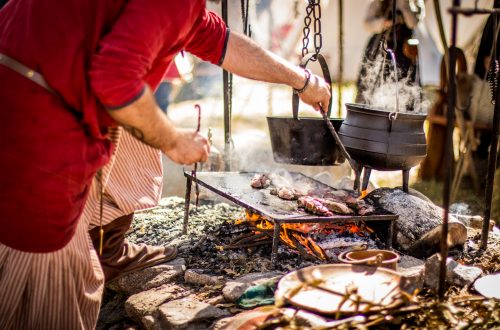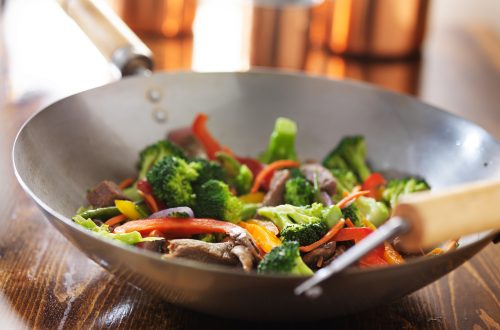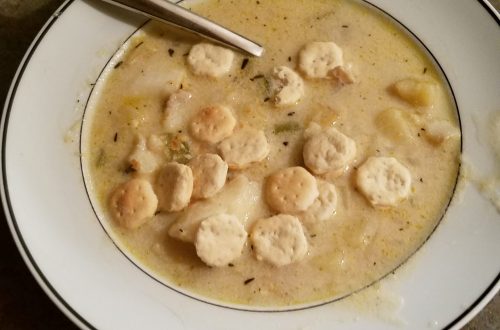
The Joys of Eating Local, or Where Does Your Dinner Grow?
When I moved from the Farm Belt to New England, my diet and way of eating gradually changed. Not much meat and potatoes. More rice, more fresh vegetables. Where I had grown up to shun fish because it was never fresh by the time it arrived at the store, I now regularly purchased seafood.
To put it simply, what is available, fresh, and accessible drives most menus. On the farm, I had access to a store of frozen beef, eggs from hens, and frozen vegetables produced by local growers. Now, in Essex County, Massachusetts, I can access several local farms within minutes, and their output includes not just vegetables but also poultry, pork, and beef. And, on the weekends, the New England Fishmongers regularly appear at a local farm market to sell their fresh catch. What drives my menus today is based on the best seasonal meat and produce available.
Renowned food writer Angelo Pellegrini stated it well in his book The Unprejudiced Palate: “…simplicity and variety, both in the ingredients and in their preparation, are the abiding principles on which the distinguished diet is based.”
But what happens when we go abroad and prepare meals there? How much does our food preparation vary, and how much do we change and adapt? I sought an answer by asking my friend Chuck Kennedy who has, with his wife Anne, frequently spent months-long periods during the winter in Mexico, France, and Senegal. And, yes, they have been “eating local.”
Rice and beans in Mexico
In Mexico, Chuck adapted rice and black beans, a Mexican staple that’s found throughout Central and South America in some form. The recipe for this dish, which incorporates black beans, probably originated in southern Mexico around Oaxaca and Campeche, with every family having its own recipe. In Chuck and Anne’s kitchen, they followed the local recipes and flavored it with Linzano, a liquid spice somewhat like Worcestershire sauce, but better, Chuck said. When fresh seafood was available, they prepared ceviche, the Latin-American dish of raw fish cured with citrus juices and spice with other seasonings, including chilies, chopped onions, salt, and coriander.
Fresh oysters in southern France
As for France, Chuck said their time in the south near the coast allowed them to consume plenty of raw oysters, which were readily available thanks to oyster farming nearby. As for the local food availability, Chuck observed that France now has Carrefour and LeClerc supermarkets and fewer local stores that served French consumers in the past. He marveled at the 30-food displays of paté and canned duck – confit and magret. Still, the French insist on “fresh,” and the supermarkets had an abundance of fresh produce that allowed Chuck and Anne to create a host of soups, especially with leeks. And the large market day on Saturdays provided them with everything from fresh vegetables to seafood. Despite the presence of the large supermarkets, the local bakeries still thrive, offering fresh bread and other baked goods.
But it was Senegal where they had a live-in cook that presented the most interesting dietary change. There, the local diet focused on millet rather than rice, and meals were eaten from a bowl by hand rather than utensils. “The hostess would make sure that guests received the best cuts of meat,” Chuck said.
Stews in Senegal
They ate mafe, a meat stew with peanut sauce, and poulet yassa, a spicy chicken stew. The universal spice was maggi, a canned cube much like bouillon that tasted of garlic, Chuck said. The prime Senegalese dish was diebou dien, made with rice and fish or “lamb.” Chuck said that the “lamb” in most servings probably died of old age. Besides the rice, it was decked out with vegetables including cabbage, carrots, cassava, eggplant, onions, and okra. The most popular drink was hissop, made from hibiscus flowers.
Eating the way locals do in foreign lands can be an adventure, sometimes more than others. Chuck remembers the day after Ramadan, which involves a month-long dawn-to-dusk fasting). The holiday known as Eid-al-Fitr marks the breaking of the fast and is a time when most Senegalese families dine on fresh-killed grilled lamb. Chuck remembers walking down a street in Dakar on Eid-al-Fitr when he noticed two men casually walking toward him with bloody machetes in hand. Turned out they were professional butchers whose job was to slaughter the sheep at each household.
As for me, I could have dispensed with that experience. But I travel to eat, and I love having new culinary adventures and taste sensations on the road. How about you? Do you have exotic dining experiences to share?




